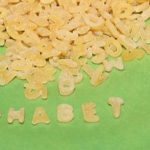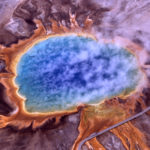Karen O'Hanlon Cohrt
Karen hails from Ireland, where she obtained an Honours Bachelor Degree in Biological Sciences and a PhD in Biotechnology before relocating to Denmark in 2011.
She has a strong and broad research background, developed through a decade of work in various academic and startup labs in Ireland and Denmark. During a research career that spanned 10 years, Karen worked with yeast, filamentous fungi, bacteria, plants, moth larvae and mammalian cells, and has tried her hand at everything from Sanger sequencing to genetically modifying disease-causing fungi.
Karen has always loved learning, asking questions and sharing knowledge with others – attributes that motivate her to write about many aspects of science for everyone from scientists to the next-door neighbour. She was a writer and editor with Bitesize Bio from 2014 until 2018.
When she’s not writing or running around after her two kids, she is either designing knitwear or obsessing about flowers!
Articles by Karen O'Hanlon Cohrt
Here we take a closer look at plasmid copy number and examine how it can be manipulated in the lab giving you flexibility in your work.
Messing up the initial calculations in your experiment is setting yourself up for failure. Here is a quick refresh on calculating the number of molecules in any DNA sample.
Need a crash course in microbial identification methods? Here we give you a rundown of the methods available for the identification of bacteria, yeast, or filamentous fungi to the species level.
In its simplest form, a bacterial growth medium is designed to support the growth of bacteria. Depending on which bacteria you want to culture, you may have a range of different media to choose from, each containing a rather unique blend of sometimes surprising (and odd!) components! In this article, I will take you through…
In a previous article, we took a quick journey through the wonderful world of microbes. Let’s take a step back now and have a closer look at the benefits of microbes. We will also look at reasons to avoid many of them. For example, the ‘plague’ which is caused by a particularly nasty bacteria called…
Welcome to the microbe series where we have a very exciting line-up planned over the coming months. Here we will talk about everything microbial, including the uses of microbes in industry and medicine, emerging pathogens, diagnostics, and much, much more! Let’s kick off this series with an introduction into these wonderful, yet sometimes nasty, organisms…
Welcome to the last article in this series! Last, but by no means least, we will look at the importance of plant miRNAs and how they differ from their animal counterparts. When/How Were Plant miRNAs Discovered? Plant miRNAs were first described in 2002, a decade after the seminal miRNA study in the nematode C. elegans…
In my first article on this topic we delved into what miRNAs are, how they are generated, and their function. Now, we are going to discuss how to identify miRNAs and their targets. Why Do You Want to Look at Something So Small Anyhow? miRNAs play a crucial role in most physiological processes. It’s not…
Welcome to the last article in the series on E. coli origins of replication where we will touch upon plasmid incompatibility! This is a broad and complicated topic so we will mainly focus on points that might be relevant for you in the lab. What is Plasmid Incompatibility? Plasmid incompatibility is usually defined as the…
mRNA, miRNA, siRNA, tRNA, rRNA! Just what do all these RNAs do? Most biology graduates will have heard a good deal about mRNAs, tRNAs and rRNAs since these are vital players in protein synthesis. For siRNAs there has been a lot of focus within drug discovery and biomedical research over the last decade, but there…
Gene expression analysis plays a pivotal role in a wide range of studies, including biomedical analysis and diagnostics. Of all the methods available for gene expression analysis, quantitative real-time PCR (qRT-PCR) is the most rapid, sensitive, and accurate to measure mRNA, and its use in clinical diagnostics is rising steadily. RNA quality entails both purity and…
Today I would like to introduce you to pUC18, a plasmid most noted for its high copy number. In the first article in this series, we talked about how origins of replication (ori) control plasmid replication and copy number. To learn about this, we focused on the pBR22 ori and the role of Rop protein in…
When you’re trying to solve a PCR problem, you’ll probably resort to a Google search at some point or another. Here’s a list of the Top 10 go-to websites to help solve your PCR problem.
As researchers, we are constantly on the lookout for new and improved ways to analyze, detect and quantify our favorite protein or gene. Luckily, we don’t always need to reinvent the wheel! PCR-ELISA is a good example of where two commonly used techniques have been merged together to create a very powerful analytical tool. What…
The literature is bursting at the seams with information about plasmids, sequences, origins of replication and more, and it can be overwhelming to sift through everything (at least for me!) when all you want is to find out a simple fact about your plasmid of choice!! This series of 3 articles aims to take a…
Let’s imagine the following scenario: You are researching a biosynthetic pathway in your favorite fungus. You know that this pathway produces a family of toxic compounds, and you want to see if you can block this pathway (or parts of it) with an antifungal drug. You have a control (no antifungal) and samples that have…
If you’re an HPLC guru, then you probably think that everyone should be using HPLC. And you might have a point – HPLC is very powerful and has broad applications across many fields. But it isn’t the answer to every problem. HPLC (high-performance liquid chromatography) is used to separate mixtures of compounds based on their…
If you work with an HPLC, then you know the frustration of going to use the machine and finding it in disarray. If you’re new to using an HPLC, then the machine can be intimidating to use and you might not know the ins and outs of using it. Here’s an article that has a…
Your advisor tells you that he wants you to use HPLC to analyze your compound. You know that you’ve heard of this technique before, but you can’t remember what HPLC stands for, let alone how to go about doing it! We’ve all been there, though. Fear not! In this article, we will remind you about…
Your advisor tells you that he wants you to use HPLC to analyze your compound. You know you’ve heard of this technique before, but you can’t remember what HPLC stands for, let alone how to go about doing it! We’ve all been there, and I bet you wish you had paid more attention in that…
The Scene of the Crime The body of a woman is found behind an abandoned warehouse on the outskirts of town. Forensic experts carry out a technical examination of the scene and suggest strangulation as the cause of death. The absence of bloody footprints or weapons means there are no obvious leads to the killer.…



















